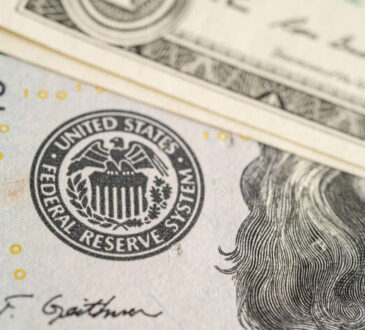Gold Continues to Move Sideways; Euro May Face Increased Volatility on PMI Data

Gold Continues to Move Sideways as Investors Await Critical Inflation Data
In the absence of any major macroeconomic reports from the US, the gold (XAU) price continued to rise on Tuesday, gaining 0.38%.
Investors remain undecisive as they wait for a string of US economic data releases this week to get more cues on the Federal Reserve’s (Fed) plans on monetary policy. As a result, the market stays relatively quiet, and traders’ activity remains subdued. ‘The gold market is just above the $2,000 mark, and it seems to be a neutral market. Every time we start to break higher, we come back down. There is a lot of uncertainty on what is going to happen here economically in the United States,’ said Daniel Pavilonis, a senior market strategist at RJO Futures. Still, an interest rate cut in Q1, which would push higher, is possible. Traders price in a roughly 50% chance of a 25 basis-point cut in March, according to the CME FedWatch tool. However, Fed officials said last week that the US central bank needs more inflation data before deciding on the interest rate path.
XAU/USD was falling slightly during the Asian and early European trading sessions. Today, traders will focus on a series of S&P Global’s Purchasing Managers’ Indices (PMI) reports from around the world. The US PMI will be released at 2:45 p.m. UTC. If the figures are higher than expected, investors may finally stop expecting a rate cut in Q1, bringing XAU/USD down, possibly below 2,000. Lower-than-expected PMIs will reveal that the US economy is slowing, so the rate cut will probably be warranted. In this case, the price of gold may grow towards 2,035.
“Spot gold may retest support of $2,016 per ounce—a break below could open the way towards the $2,002–$2,005 range,” said Reuters analyst Wang Tao.
The Euro May Face Increased Volatility Today Due to PMI Reports
The euro (EUR) fluctuated in a 1.08200–1.09100 range and lost 0.28% in a volatile trading session on Tuesday.
Even though Richmond Manufacturing Index numbers were lower than expected, the (DXY) continued to trade near a 6-month high yesterday. It seems that investors are beginning to realize that the Federal Reserve (Fed) won’t rush to cut interest rates in Q1. The probability of a 25 basis-point (bps) rate reduction in March has dropped below 50%, according to the latest interest rate swap market data.
At the same time, the outlook for the eurozone’s economy remains murky. Yesterday, the European Commission said consumer confidence fell below expectations, suggesting that European businesses continue struggling amid low consumer spending. The European Central Bank (ECB) will announce its interest rate decision on Thursday, but it’s unlikely to sound hawkish as the economy continues to underperform. However, investors still believe the ECB will be less dovish than the Fed in 2024. They price in roughly 130 bps worth of rate cuts from the ECB and 140 bps of cuts from the Fed by the end of 2024.
was relatively unchanged during the Asian trading session but started to rise slightly in the European session. Today, EUR/USD traders may face substantial volatility as S&P Global releases its Purchasing Managers’ Indices (PMIs) for the eurozone at 9:00 a.m. UTC and for the US at 2:45 p.m. UTC. The PMI is a leading indicator of the economy’s health and serves as a proxy for changes in business activity and inflation. Therefore, higher-than-expected PMIs will have a bullish impact on the nation’s currency, whereas weak data may pull currencies down.
Weak UK Economic Data Puts Downward Pressure on the British Pound
Yesterday, despite increased spreads between gilt and Treasury yields, the British pound (GBP) decreased by 0.35%. However, the currency stayed above the lows of late December and January, near the 1.2600 mark.
Since the middle of December 2023, has been trading sideways within 1.26000–1.28000. Next week, the Bank of England (BOE) will announce its interest rate decision. Recent weaker-than-expected data on industrial production and retail sales suggested it may be time for the BOE to consider decreasing the interest rate, which is now at its highest point in nearly 16 years. While economists in a Reuters poll don’t foresee an immediate cut on 1 February, the majority anticipate one by mid-2024.
Overall, the market is currently pricing in roughly 90 basis points (bps) worth of rate cuts in 2024. The BOE, criticized for its initial slow response to rising inflation, now sees inflation dropping to 2% soon, faster than earlier forecasts. However, factors like a potential fiscal stimulus from the government budget may prompt the regulator to maintain a cautious approach to reducing borrowing costs.
Today, GBP/USD rose above 1.2700, recovering slightly after experiencing a 0.18% drop overnight. Today, U.K. S&P Global’s Purchasing Managers’ Indices (PMIs) will be released at 9:30 a.m. UTC. If the composite PMI figure is lower than expected, GBP/USD may fall below 1.26500. Otherwise, strong data may support the long-term bullish trend in GBP.



